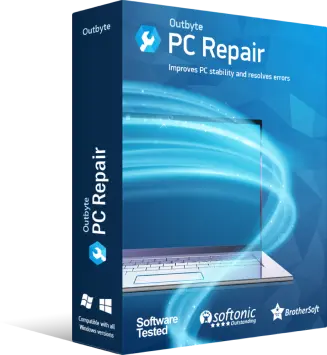Repair Utility
- File name: pc-repair-setup.exe
- Tool''s Developer: Outbyte
- Certified by: Symantec
- Download Size: 24 MB
- Downloaded: 1,143,473 times
-
Rating:

 Start Download
Start Download
Windows Operating Systems



USB 3.0: High-Speed Data Transfer and Enhanced Connectivity
USB 3.0, introduced in 2008, revolutionized data transfer technology by offering speeds up to 5 Gbps—nearly ten times faster than its predecessor, USB 2.0. With its blue-colored ports and backward compatibility, it became a cornerstone of modern computing, enabling rapid file transfers, efficient peripheral connectivity, and improved power delivery. However, users often encounter challenges that prevent them from fully leveraging USB 3.0’s capabilities. This article explores common causes of USB 3.0 performance issues, provides actionable solutions, and highlights the importance of optimizing this technology for seamless connectivity.
1. Causes of USB 3.0 Performance IssuesDespite its advantages, USB 3.0 doesn’t always deliver the expected performance. Understanding the root causes of these issues is the first step toward resolving them.
a. Hardware LimitationsNot all USB ports are created equal. A device labeled “USB 3.0” might underperform if connected to a USB 2.0 port by mistake. Additionally, low-quality cables or damaged ports can bottleneck data transfer speeds. For instance, USB 3.0 cables have extra wiring to support higher speeds, and using an older cable negates this benefit.
b. Outdated or Incompatible DriversDrivers act as intermediaries between hardware and software. If USB 3.0 drivers are outdated, corrupted, or missing, the system may default to USB 2.0 speeds. This is common after operating system updates, which can sometimes disrupt driver functionality.
c. Power Management SettingsModern operating systems often prioritize energy efficiency. Power-saving features might throttle USB port performance to conserve battery life, especially on laptops. This can result in inconsistent transfer rates or intermittent disconnections.
d. Software ConflictsBackground applications, antivirus scans, or firmware bugs can interfere with data transfer processes. For example, a security software might scrutinize each file during transfer, slowing down the operation.
e. File System and Disk HealthThe type of file system (e.g., FAT32 vs. NTFS) and the health of the storage device itself also play a role. Fragmented disks or failing drives struggle to maintain high-speed transfers, even with USB 3.0’s capabilities.
2. How to Fix USB 3.0 Performance IssuesResolving USB 3.0 problems requires a mix of hardware checks, software tweaks, and preventive measures. Follow these steps to optimize performance:
Step 1: Verify Hardware Compatibility- Identify USB 3.0 Ports: Look for blue-colored ports or the SuperSpeed (SS) symbol. Consult your device manual if unsure.
- Use Certified Cables: Ensure cables are marked “USB 3.0” or “SuperSpeed.” Avoid using damaged or excessively long cables, as they can degrade signal quality.
- Test Different Ports: If a port underperforms, try another one to rule out hardware faults.
- Windows: Open Device Manager, expand Universal Serial Bus controllers, right-click on USB 3.0 hubs, and select Update driver. Alternatively, download the latest drivers from your motherboard manufacturer’s website.
- macOS: System updates typically include driver improvements. Check for updates via System Preferences > Software Update.
- Linux: Use package managers like
aptoryumto update USB drivers.
- Disable USB Selective Suspend (Windows): Go to Power Options > Change plan settings > Change advanced power settings. Under USB settings, disable selective suspend.
- Optimize Energy Saver (macOS): Navigate to System Preferences > Battery > Power Adapter and uncheck Put hard disks to sleep when possible.
- Temporarily Disable Antivirus: Turn off real-time scanning during large transfers.
- Close Background Apps: Free up system resources by closing unnecessary programs.
- Check for Firmware Updates: Visit the manufacturer’s website to update external drive firmware.
- Format Drives to NTFS or exFAT: These systems support larger files and faster transfers compared to FAT32.
- Defragment HDDs: Use built-in tools like Windows’ Defragment and Optimize Drives or third-party software.
- Test Drive Health: Tools like CrystalDiskInfo (Windows) or Disk Utility (macOS) can identify failing drives.
If issues persist, consider investing in a USB 3.0 expansion card for older PCs or replacing aging external drives with modern SSDs.
3. ConclusionUSB 3.0 remains a vital technology for users who rely on fast data transfers and reliable connectivity. While hardware limitations, driver issues, and software conflicts can hinder its performance, most problems are solvable with systematic troubleshooting. By verifying hardware compatibility, keeping software updated, and optimizing system settings, users can unlock the full potential of USB 3.0.
As technology evolves, USB standards continue to advance—USB4 and Thunderbolt now offer even greater speeds. However, USB 3.0’s balance of affordability, compatibility, and performance ensures it will remain relevant for years to come. Whether transferring critical work files or connecting peripherals, a well-maintained USB 3.0 setup is an asset in any tech ecosystem. Prioritizing these fixes not only enhances productivity but also future-proofs your devices against obsolescence.
|
Download the latest Epson L3150 driver for seamless printer setup and optimal performance. Ensure compatibility with Windows, macOS, and other operating systems by accessing official Epson support resources. Follow simple installation steps to enable printing, scanning, and wireless functionality for your Epson L3150 inkjet printer.
|
|
Mouse Manager: Effortlessly Customize and Control Your Mouse for Optimal Performance – Unlock precision and personalization with intuitive tools to adjust DPI, button assignments, and macros. Streamline workflows, enhance gaming, and tailor your mouse to your unique needs for seamless, responsive control.
|
|
Download the latest Epson Stylus SX130 drivers for seamless printer performance on Windows and Mac. Access official software directly from Epson’s support site to ensure compatibility, enhanced functionality, and reliable printing results. Install effortlessly for optimal device operation.
|
|
USB 3.0 revolutionizes data transfer with speeds up to 5 Gbps, delivering 10x faster performance than USB 2.0. Its advanced architecture ensures efficient power management and backward compatibility, supporting seamless connections for storage devices, peripherals, and multimedia. Ideal for rapid file transfers and high-bandwidth applications, USB 3.0 enhances productivity and connectivity in modern tech environments.
|
|
Learn step-by-step methods to enable or install Bluetooth on your notebook. Discover how to check hardware compatibility, activate Bluetooth via settings or Device Manager, and troubleshoot common issues. If your device lacks built-in Bluetooth, explore simple solutions like USB adapters and driver updates for seamless wireless connectivity.
|
|
The HP ScanJet G3110 delivers professional-grade scanning for photo films and negatives, combining high-speed performance with exceptional 4800 dpi optical resolution. Ideal for preserving memories or professional projects, it captures intricate details, vibrant colors, and subtle textures, ensuring crisp, archival-quality digital reproductions. Its efficient design streamlines workflows, making it perfect for photographers, archivists, and enthusiasts seeking precision and reliability.
|
|
Optimize your Windows 11 64-bit audio experience with the latest Realtek Audio Driver. Ensure crystal-clear sound quality, reduced latency, and enhanced compatibility for speakers, headphones, and microphones. Download now for reliable performance, seamless device connectivity, and updates tailored for modern Windows systems.
|
|
Ensure your STK1AW32SC device operates smoothly with the correct drivers. This guide provides step-by-step instructions to download and install the latest drivers, troubleshoot common issues, and ensure compatibility for optimal performance.
|
|
Find and download the correct Bluetooth driver for Windows 7 to ensure seamless device connectivity. Access official manufacturer websites or trusted sources for secure, compatible drivers. Verify device and OS compatibility before installation for optimal performance.
|
|
Learn how to format a drive to FAT32 with this straightforward guide. Discover tools and methods for Windows, macOS, or Linux, including built-in utilities and third-party software. Follow clear steps to ensure compatibility with older devices, manage storage limits, and avoid data loss. Perfect for beginners and tech-savvy users alike.
|
| See all queries |



